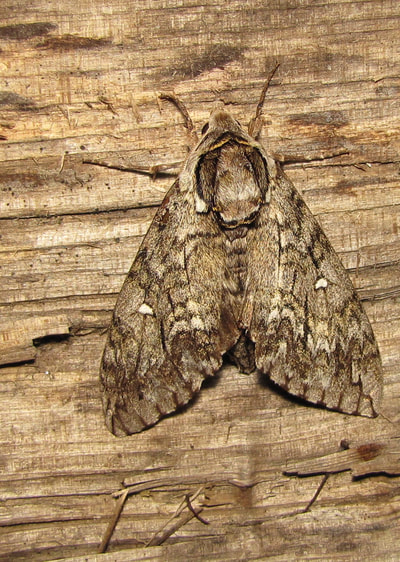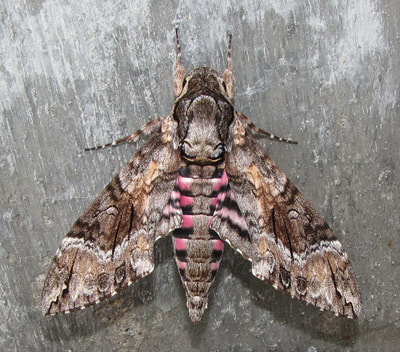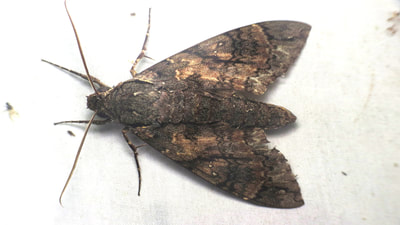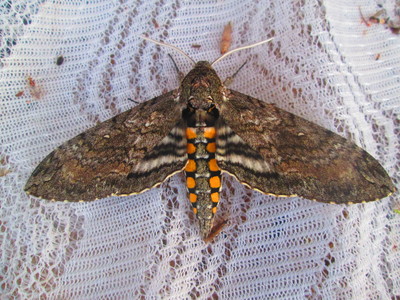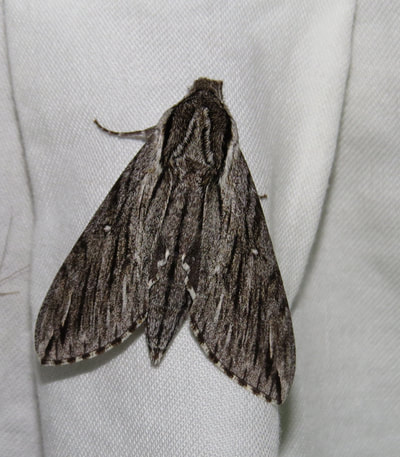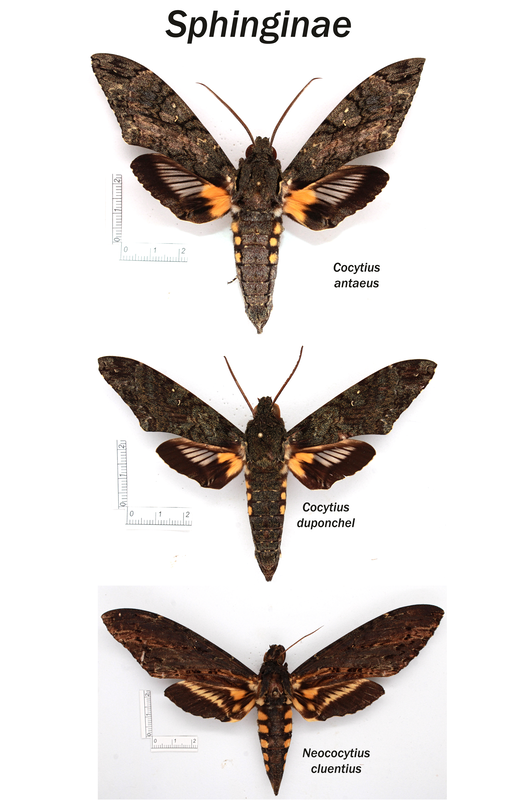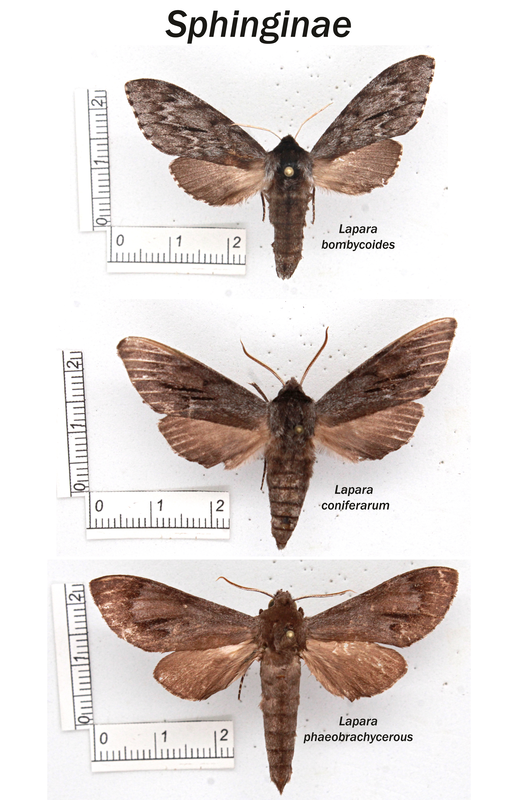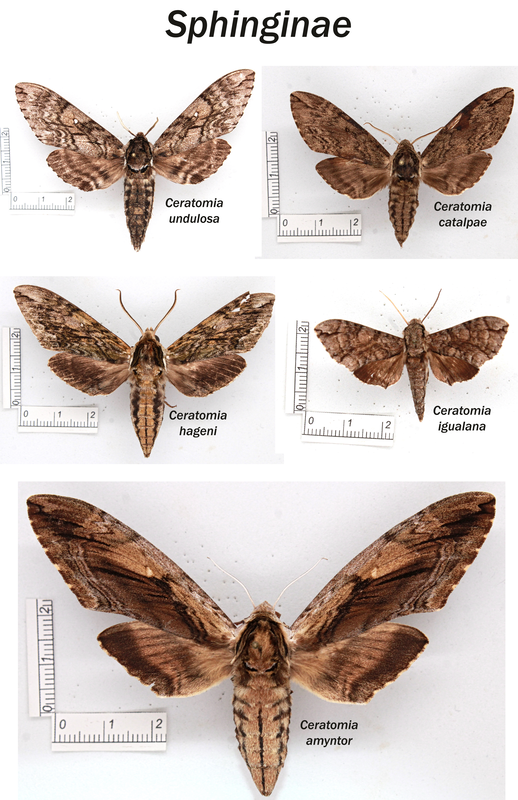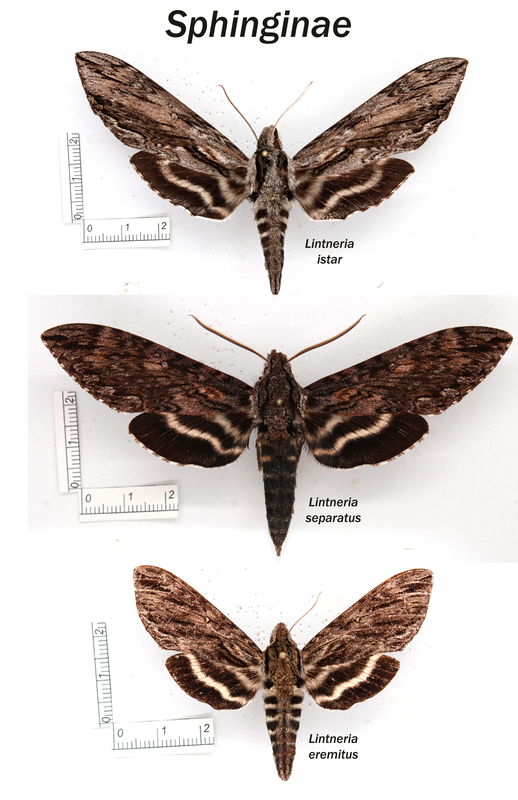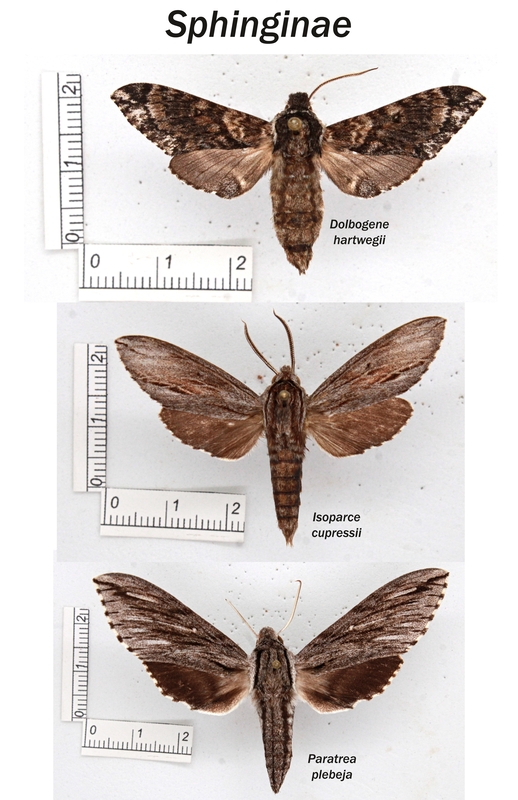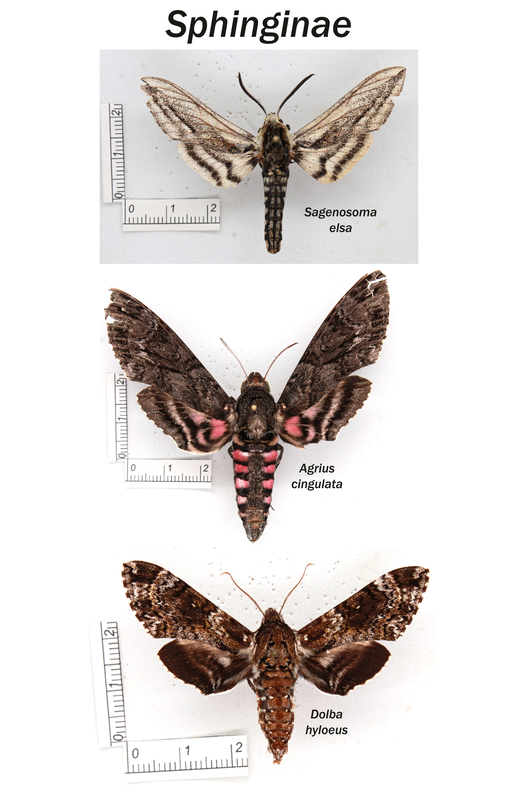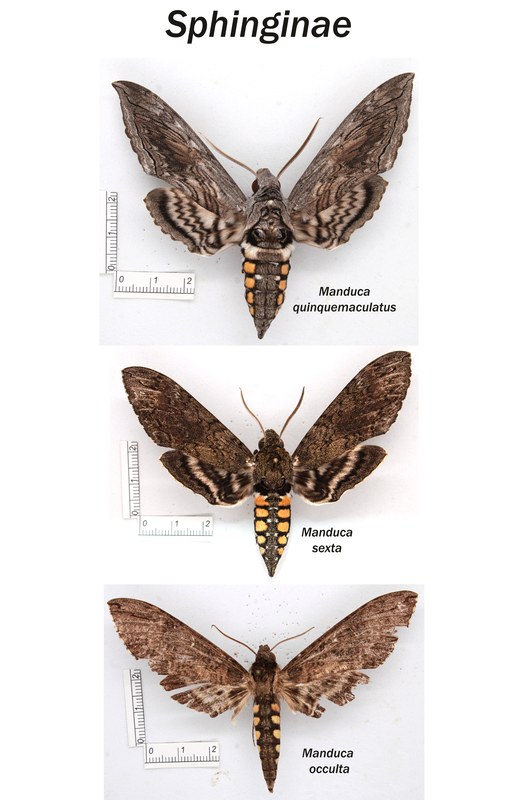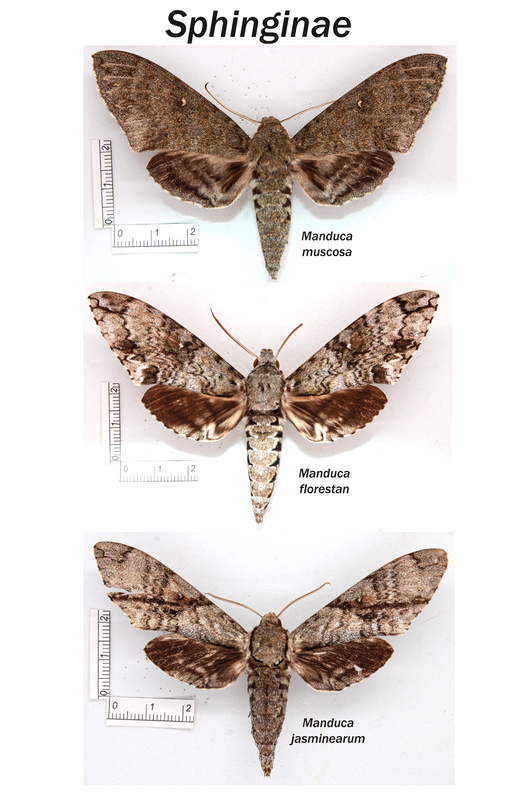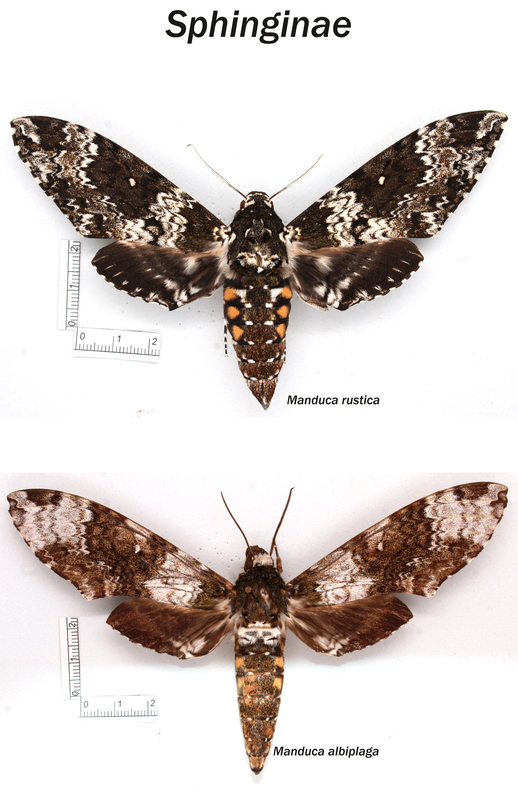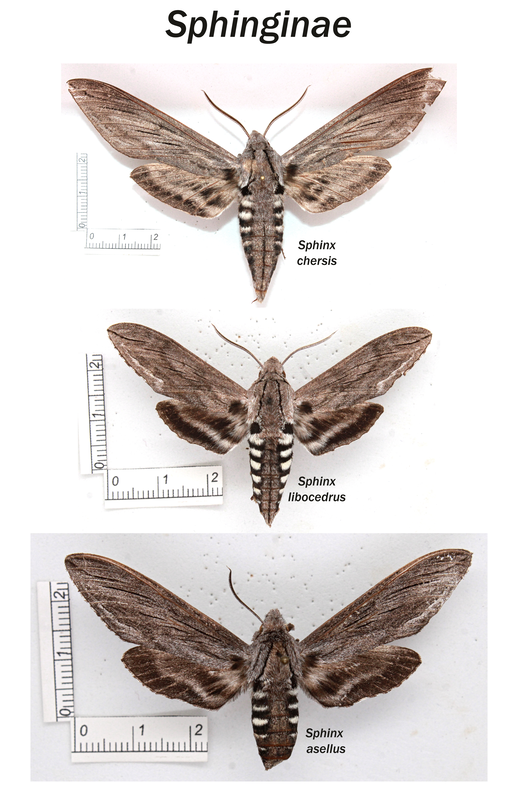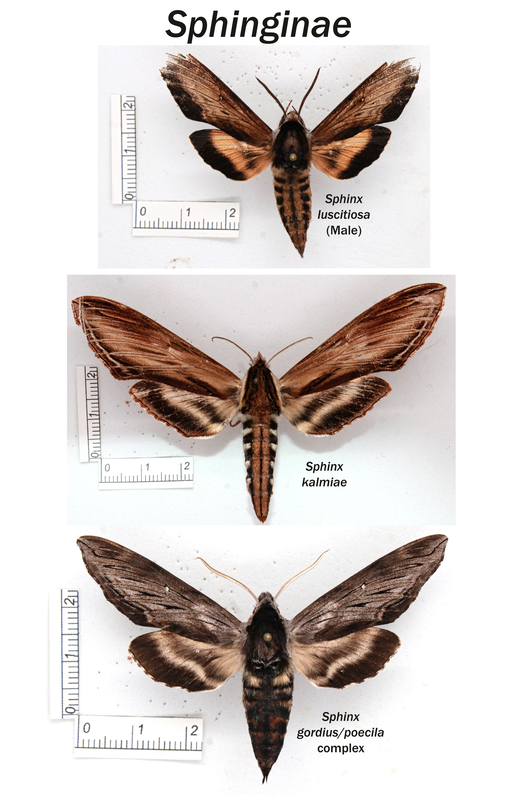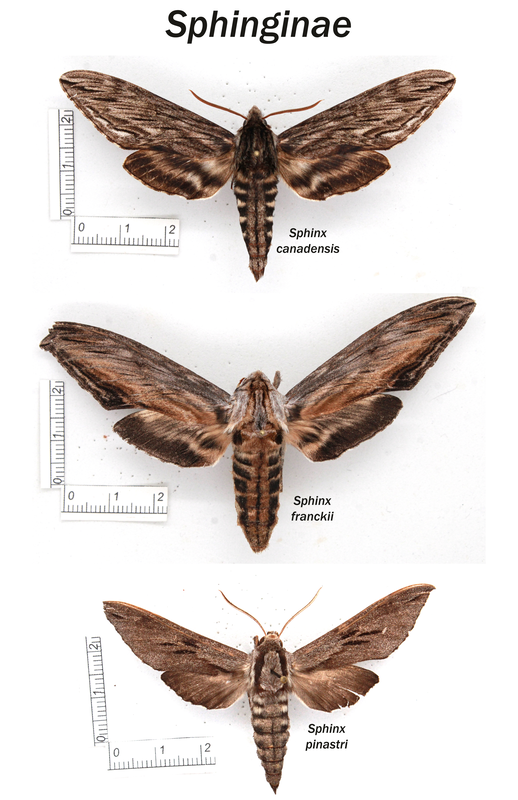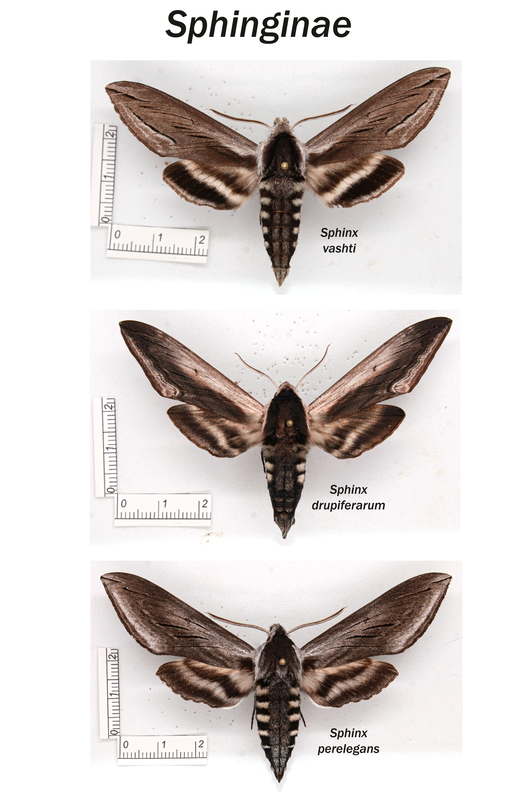What is Sphinginae?
The Sphinginae is the smallest subfamily in the family Sphingidae with about 40 genera worldwide containing about 210 species. In the US, it contains 12 genera and about 50 species. The type specimen is Sphinx ligustri (Linnaeus, 1758).
Sphinginae sphingids are extremely variable in size. Our smallest species has forewings 21mm in length, whereas our largest has forewings 160mm in length. This subfamily has many species that feed, and contains the moths with the largest proboscises in the world. There are two tribes within this subfamily, Acherontiini and Sphingini.
The following genera can be found in this subfamily:
Agrius - 1 Species
Cocytius - 2 Species
Neococytius - 1 Species
Manduca - 10 Species
Dolba - 1 Species
Dolbogene - 1 Species
Ceratomia - 6 Species
Isoparce - 1 Species
Sagenosoma - 1 Species
Paratrea - 1 Species
Sphinx - 16 Species
Hyloicus - 1 Species
Lintneria - 5 Species
Lapara - 3 Species
The gallery below contains a few select species from this subfamily. It is not inclusive and doesn't represent all of the species found in the USA.
The Sphinginae is the smallest subfamily in the family Sphingidae with about 40 genera worldwide containing about 210 species. In the US, it contains 12 genera and about 50 species. The type specimen is Sphinx ligustri (Linnaeus, 1758).
Sphinginae sphingids are extremely variable in size. Our smallest species has forewings 21mm in length, whereas our largest has forewings 160mm in length. This subfamily has many species that feed, and contains the moths with the largest proboscises in the world. There are two tribes within this subfamily, Acherontiini and Sphingini.
The following genera can be found in this subfamily:
Agrius - 1 Species
Cocytius - 2 Species
Neococytius - 1 Species
Manduca - 10 Species
Dolba - 1 Species
Dolbogene - 1 Species
Ceratomia - 6 Species
Isoparce - 1 Species
Sagenosoma - 1 Species
Paratrea - 1 Species
Sphinx - 16 Species
Hyloicus - 1 Species
Lintneria - 5 Species
Lapara - 3 Species
The gallery below contains a few select species from this subfamily. It is not inclusive and doesn't represent all of the species found in the USA.
